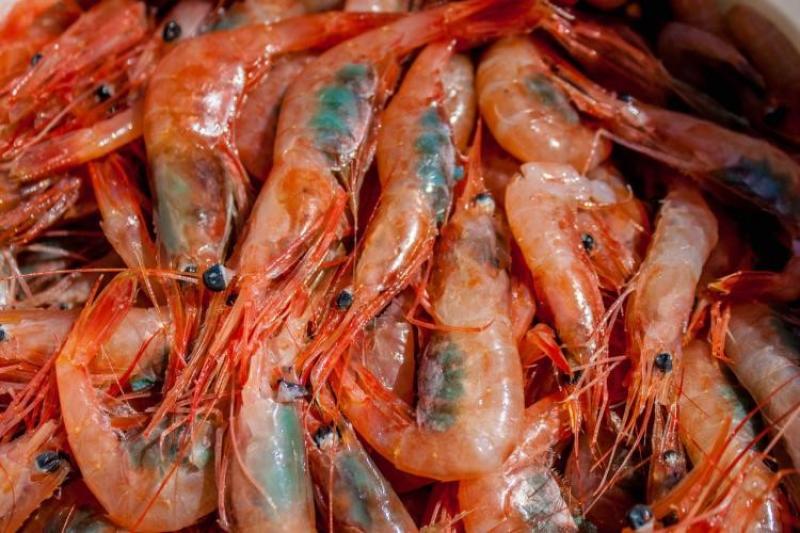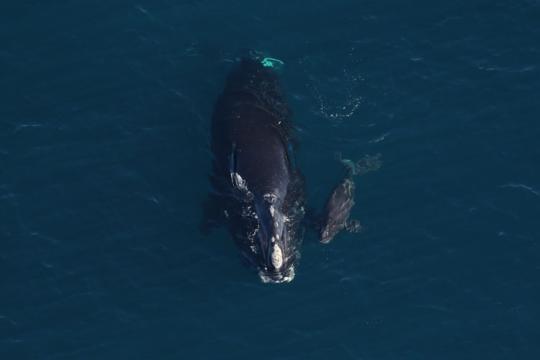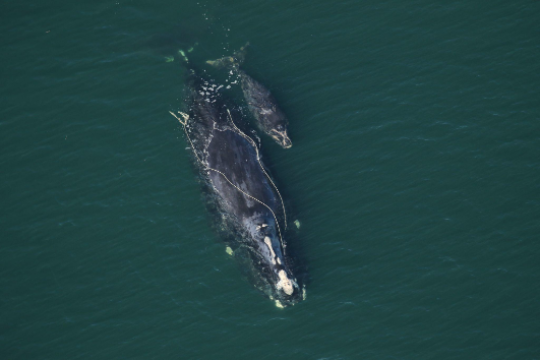An extreme heatwave in the Gulf of Maine in 2012 resulted in the warmest ocean temperatures in the region in decades. By 2013, the Atlantic northern shrimp population in the gulf had experienced a stock “collapse.” That is what fishery scientists call a rapid decrease in numbers that is not a natural fluctuation in stock size. Scientists studying the collapse have found that during this time, warmer temperatures were linked to increases in longfin squid, a major shrimp predator. They arrived in the Gulf of Maine sooner than usual and in more areas where shrimp occur.
”Our results suggest that longfin squid may have been a major player in the collapse of Gulf of Maine northern shrimp during an extreme heat wave event,” said Anne Richards, a biologist at the Northeast Fisheries Science Center’s laboratory in Woods Hole, Massachusetts.
Richards co-authored the study with Margaret Hunter from the Maine Department of Marine Resources Division of Biological Monitoring and Assessment. They recently published their conclusions in the online journal PLOS ONE.
Temperature is Everything
A northern shrimp’s early life is highly influenced by temperature. The Gulf of Maine population is at the southern edge of this species’ distribution, and they are mostly found in the cooler western part of the gulf.
Recruitment success—how many shrimp survive their first year to become one-year-olds—is related to both spawning biomass and ocean temperatures. Higher spawning biomass and colder temperatures produce stronger recruitment of new, young shrimp into the population. In 2012 waters in the region were 2°C above the 1982–2011 average, and remained above average in all months of the year.
The Gulf of Maine has been warming rapidly. The northern shrimp population had shown signs of stress before 2012, with low survival of young shrimp to age 1 in 2010 and 2011. Even though 2012 was a very warm year, it did not seem that high temperature was enough by itself to cause the population collapse that occurred.
Other Factors Driving the Collapse
To study other possible factors in the shrimp decline, Richards and Hunter used data collected between 2003 and 2017. Gulf of Maine warming accelerated in that period and was the most intense in more than 30 years. They examined data from the commercial fishery and extensive ecosystem monitoring data gathered on scientific surveys in the Gulf of Maine in the spring, summer, and fall. Those surveys were conducted by:
- Northeast Fisheries Science Center
- State of Maine
- State of New Hampshire
- Atlantic States Marine Fisheries Commission, which manages the northern shrimp fishery
By reviewing survey data, Richards and Hunter showed that shrimp did not change their distribution in 2012. A look at existing studies showed that while the water temperatures were high enough to have affected shrimp physiological processes at some level, they were probably not high enough to kill them outright. Commercial landings data showed that fishing removed some shrimp, but not enough to account for the population collapse.
Looking at temperature data, it was clear that 2012 was a hot year. It was also clear that the warmer temperatures caused spring to come early in the Gulf and last longer than in an average year. That meant that female shrimp stayed inshore longer, delaying their migration to offshore areas.
Could a predator have taken advantage of this mismatch and tipped the population into collapse?
Catching a Predator
If you want to know who is eating whom, you look at stomach contents. Researchers next analyzed stomach content data for all species caught during the four scientific surveys in 2012. No new predators were identified, but 11 species exhibited a population peak in one or more seasons during 2012.
Of these, longfin squid was the only species that clearly increased, and also increased in areas where shrimp were also present in 2012. Their numbers were also relatively high in all four seasonal surveys and in the 2013 spring surveys, both inshore and offshore. The early onset of spring in the Gulf in 2012 also meant that female shrimp were still inshore when the longfin squid arrived, in areas shrimp would have left in cooler years. This increased the opportunity that squid had to feed on shrimp.
Shrimp Population Has Not Recovered
“Despite a fishing moratorium beginning in December 2013, the population has not recovered and the fishery is still closed. Our study provides further evidence that changing species interactions will have major impacts as ecosystems reorganize due to climate change,” said Richards.
Today, an increase in other northern shrimp predators—spiny dogfish, redfish and silver hake—may also be contributing to a decline in the stock. Ocean temperatures in the Gulf of Maine remain high.






